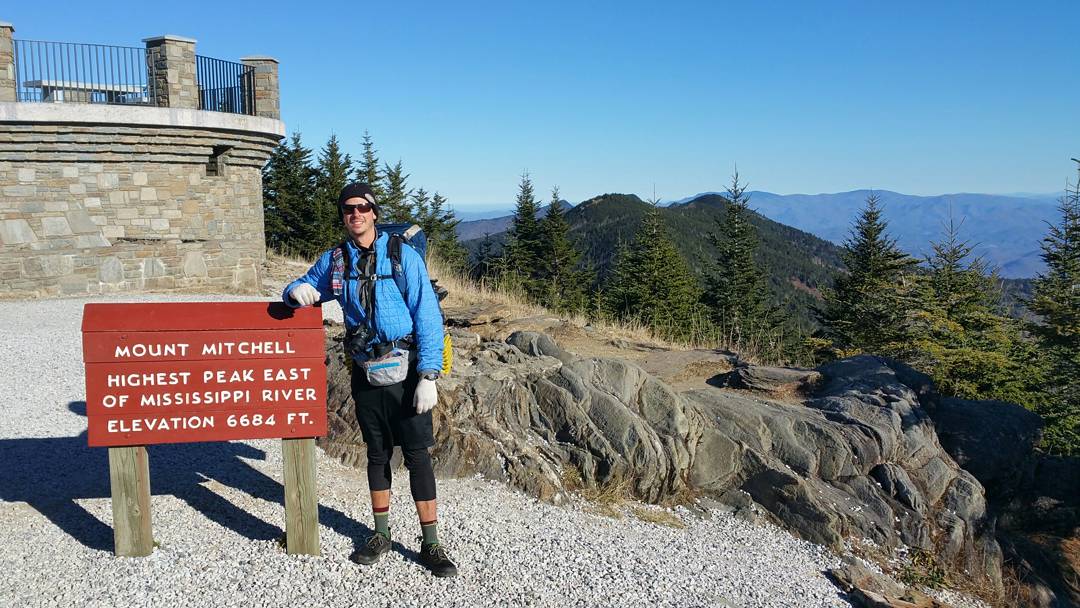5 Tips for Walking 5,000 Miles

Dahn Hikes on the Pacific Crest Trail during a SOBO thru-hike in 2016. Photo by Dahn Hikes
In 2018 I hiked 5,000 miles. Lots of mistakes were made and many times I doubted the feasibility of my lofty goal. Below are 5 salient recommendations for that long walk you’re about to undertake.
1. Don't Quit Just Because You a Had a Crappy Day.

Mud for days... Photo by Dahn Hikes
Had a craptacular day? What did you hike? 30 miles? That's less than a fraction of a percent of your trip. Perspective is everything. I learned this early and fast. On the third day of the beginning of my hike, I was walking through the heinously muddy Herekino and Raetea forests in Northland, New Zealand. Mud up to my hip and slippery non-existent sludge slopes made forward progress a measly 1 km/hr. I was starting to worry if the rest of the hike was like this, I'd never realistically finish. At the end of the day, I was completely fatigued and demoralized. It wasn't a great day, by any means. Cursing and falling for hours tore me down from the initial euphoria of starting a thru-hike. Laying down for the night, I thought to myself, "today was pretty crappy, but it's only 1 out of 365 days I'll be walking this year." 0.27% of a hike is hardly anything to quit over, especially when a majority of days spent on the trail would be filled with toothy smiles, and sighs of exultations.
2. Everything in Moderation...
Dahn hiking in South America last year during their summer. Photo by Dahn Hikes
It should have been four more days until the finish of Te Araroa. In my over-exuberance and through some fool-hardy persuasion I hiked all day, and through the night to reach the southern terminus of Bluff, a grueling 115km of a muddy overgrown forest, exposed road, relentlessly windy beach, and heavily trafficked highway. Laid out for the better part of two days afterward I had one key takeaway: exercise moderation (finding a balance between the two extremes of deprivation and overindulgence). A thru-hike provides ample opportunity for both, it is our job to endure and enjoy with self-restraint. This can mean skipping the burgers and beers in town for a healthy and nutrient replenishing meal. It can also mean setting up camp early to catch up on rest, or doing a short day out of a resupply location to maximize recovery. Overdrinking and eating in town, under-nourishing in the field, and over exerting on the trail, are all urges to over-indulge or deprive, fight them as best you can! Everything in moderation
3. If You Fail to Prepare, Prepare to Fail!
Everything in moderation except for shots like these. Photo by Dahn Hikes
If you fail to prepare, prepare to fail. One week and about 200 miles from the southern terminus of the Pacific Crest Trail and the end of my year of hiking I kicked a rock, hard. It hurt, a lot. I thought I broke my big toe. When I took off my shoes and socks, I had a deep laceration and plenty of blood. Why am I telling you this nasty anecdote? The reason for my injury was because my body was tired, my muscles were fatigued, weak, and atrophied. Had I maintained my regiment of strength conditioning, static stretching, and kinetic wellness, I could have most likely avoided this “moment of weakness” pun-very-much-intended. Stretching is so important but hardly ever done by thru-hikers. Do static (slow, long) stretches to let your muscles cool down after a day of walking. Push ups, sit ups, yoga, and other dynamic movements in the morning are great for warming your muscles back up and letting them know they’re about to be in use. Injury prevention is much easier to deal with than injury coping, especially while on the trail.
4. Doing Little Things Well Allows for Success
Snow line on the mountains. Photo by Dahn Hikes
Doing the little things well allows for success. Hundreds of thousands and even millions of repetitions. From resupplying, to filtering water, to packing, to every footstep. Have a methodology and perfect it. During 2018 I took approximately 10.7 million steps. The correct brand of shoe (3 mm drop), sock (wool blend), and gait-pattern (mid-foot strike) ensured that my feet didn’t absolutely hate me. Others were not so lucky. I heard countless stories of shin-splints, plantar fasciitis, and other overuse injuries ending people’s hikes prematurely. The way we do the recurring tasks necessary for a thru-hike determines whether those details are our downfall (The Devil is in the details) or are the tiny tasks that get us to our destination (God is in the details).
5. Hike for Yourself Only, No One Else

The solitude of walking a snowy ridge in the wilderness should be something savored for yourself, no one else. Photo by Dahn Hikes
It's cliche but the only way you'll get the most out of your hike is if you’re genuinely out there for yourself, and no one else. The famous Oscar Wilde quote: “Be yourself; everyone else is already taken.” comes to mind, especially on a long walk. There are many things to prove or people to impress by doing something like a thru-hike. Ultimately, the only way to not only thrive but achieve the personal development that makes long-distance hiking so rewarding is to make sure you’re undertaking this for YOU. Hike your own hike.
About the Author, Dahn Hikes is living the dream of many, spending his time chasing the warm weather of summer as he hikes all over the world. You can follow Dahn and his amazing photos on Instagram @dahnhikes











Leave a comment
This site is protected by reCAPTCHA and the Google Privacy Policy and Terms of Service apply.